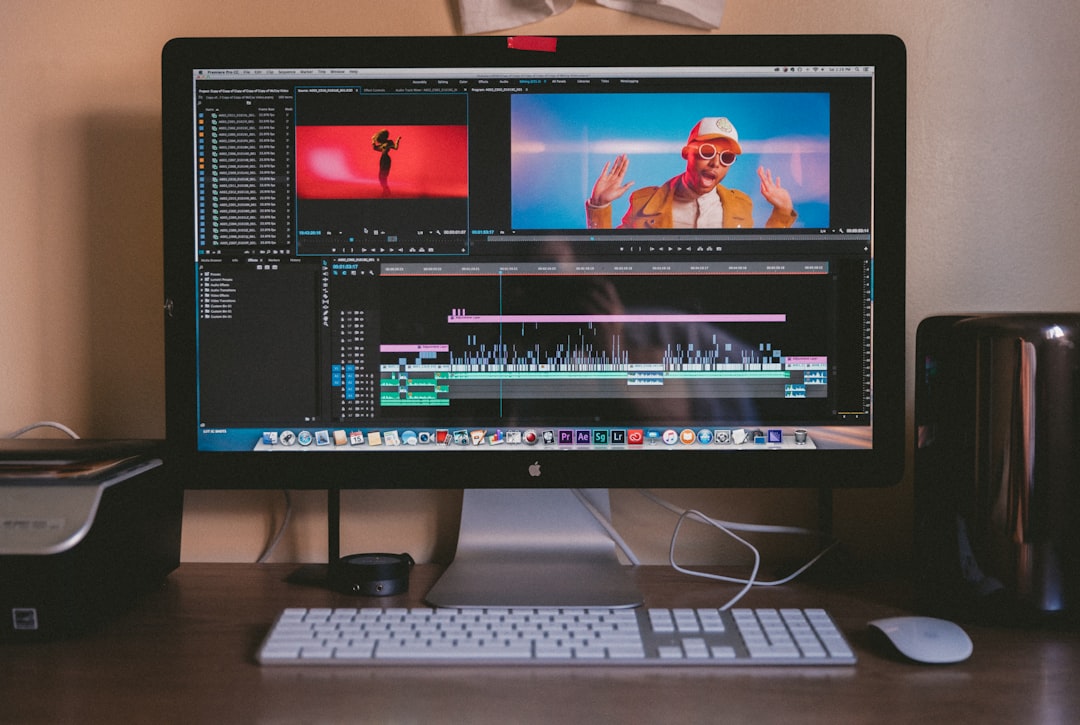
Step-by-Step Guide to Streamlining Video Production with AI-Powered Editing Tools
In the current era of digital transformation, video content has become one of the most powerful mediums to communicate, market, and educate. Whether you’re a content creator, a marketing professional, or part of a corporate communications team, producing high-quality videos quickly and efficiently is more essential than ever. Enter artificial intelligence: the game-changer of modern video production. AI-powered editing tools streamline the entire workflow, reducing time, cutting costs, and improving consistency.
This article serves as a detailed, step-by-step guide to leveraging AI editing tools for more efficient video production. You’ll learn how to integrate these tools into your workflow effectively, ensuring you gain a competitive edge in the saturated content landscape.
Step 1: Planning and Scripting with AI
Before editing begins, strong planning and clear scripting are crucial. AI writing assistants, such as language generation models, can help develop compelling and actionable scripts quickly. These tools analyze trends, user intent, and language structure to generate scripts that resonate with target audiences.
- Use Script Generators: Tools like Jasper or Copy.ai can create outlines or even full scripts from a simple prompt.
- Analyze Trends: Platforms like BuzzSumo offer insights into trending video topics.
- Optimize for Platforms: AI can tailor scripts for specific platforms such as YouTube, TikTok, or LinkedIn by understanding each platform’s best practices.
Step 2: Collecting and Organizing Footage Efficiently
Once your script is finalized, the next step is gathering all the necessary video content. AI tools can assist here as well, enabling you to tag, sort, and categorize your files automatically, saving countless hours.
- AI-Based Media Management: Services like Adobe Sensei help catalog footage based on visual recognition, facial features, and motion detection.
- Transcription Tools: Descript or Trint employ speech-to-text AI to automatically generate subtitles and searchable transcriptions of your footage.
Organizing footage using these tools not only makes editing faster but also improves accuracy, especially in collaborative environments.
Step 3: Intelligent Video Editing with AI
This is where AI can significantly reduce manual effort. Modern AI editing platforms offer tools for cutting, trimming, adding transitions, and even choosing the best takes—automatically.
- Automated Editing: Tools like Magisto and Wisecut allow you to upload raw footage, and they create a polished video by automatically selecting key scenes and syncing with music.
- Noise Reduction and Enhancement: AI algorithms in tools like Adobe Premiere Pro or VEED can clean audio, correct colors, stabilize footage, and adjust lighting.
- Auto Reframing: AI helps reframe clips for different social media aspect ratios without losing focus on the subject.

These intelligent systems make complex editing tasks accessible even to beginners, while enabling professionals to scale their output volumes without sacrificing quality.
Step 4: Voiceovers and Audio Engineering
Voiceovers are a critical component in many types of video, from tutorials and explainer videos to documentaries. AI voice synthesis has made creating realistic and expressive voiceovers easier than ever.
- Text-to-Speech Software: Tools such as Murf.ai, Speechify, or ElevenLabs transform written content into natural-sounding speech.
- Multilingual Support: Many AI voice tools support a range of languages and accents, allowing global reach without the cost of hiring multiple voice actors.
- AI-Driven Sound Mixing: Applications like Auphonic optimize volume levels, reduce background noise, and balance audio tracks automatically.
These advancements significantly cut production time while maintaining a high auditory standard, which is crucial for viewer engagement and accessibility.
Step 5: Integrating Visual Effects and Graphics
Visual storytelling is enhanced with the use of motion graphics and special effects—areas where AI tools are making impressive strides.
- Automated Animation: Platforms like RunwayML and Lumen5 allow you to generate animations from text scripts or static images.
- Template Matching: AI can apply styling templates based on your brand guidelines, keeping content visually consistent.
- Scene Recognition: Intelligent detection allows insertion of appropriate background or visual overlays without manual keyframing.

By using AI-generated graphics, even small production teams can deliver visually captivating content that previously required a specialized team of designers.
Step 6: Collaborating in Real-Time with AI Tools
AI editing ecosystems are increasingly built with remote collaboration in mind. Whether your team is distributed globally or just working from different departments, AI enhances collective productivity.
- Smart Versioning: AI tools track changes and suggest edits based on version history.
- Real-Time Feedback Loops: Services like Frame.io leverage AI to organize feedback, tag issues in specific frames, and offer annotation tools.
- Automated Task Assignments: Using AI, project management integrations can distribute editing tasks efficiently based on members’ past roles and activity.
This level of intelligent collaboration prevents bottlenecks and ensures that editorial intent translates smoothly into the final product.
Step 7: AI-Assisted Publishing and Optimization
Once editing is completed and final approval is given, video distribution is the next phase. AI tools help optimize publishing strategies and improve video SEO.
- Title and Description Generation: AI platforms like TubeBuddy or VidIQ optimize your metadata for better searchability.
- Thumbnail Selection: AI analyses viewer behavior to select images that are statistically more clickable.
- Performance Monitoring: Tools like Hootsuite use AI models to predict optimal posting times and track engagement metrics in real-time.
With AI optimizing your video for both algorithms and human viewers, your chances of reaching the right audience increase exponentially.
Benefits of Streamlining Video Production with AI
Implementing AI throughout your video production workflow offers numerous advantages:
- Speed and Efficiency: Tasks that previously took hours can now be completed in minutes.
- Consistency: Standardizing quality across multiple videos becomes easier with automation.
- Cost-Effectiveness: Reduces reliance on large teams without compromising output quality.
- Scalability: AI allows you to scale creative content production to meet growing demands.
Potential Drawbacks and Considerations
Despite the numerous benefits, it’s important to approach AI integration thoughtfully:
- Over-Reliance: Heavily relying on automation can stifle human creativity and nuance.
- Privacy Concerns: Always ensure your tools comply with data security and intellectual property laws.
- Learning Curve: While user-friendly, some AI platforms still require initial time investment to master.
Understanding the strengths and limitations of AI ensures you make responsible, effective use of these powerful technologies.
Conclusion
AI-powered editing tools mark a significant evolution in how videos are planned, created, and distributed. By streamlining every phase of production—from scripting to post-publishing analytics—AI allows creators to focus on storytelling, strategy, and audience connection. Whether you are an independent content maker or part of a large enterprise, embracing these technologies will not only enhance your workflow but also elevate the quality and impact of your video content in a fast-paced digital world.
It’s no longer a question of if you should integrate AI into your video production—but when and how. Don’t wait to adopt the future of video editing. Start now, and transform your workflow with intelligence, creativity, and precision.